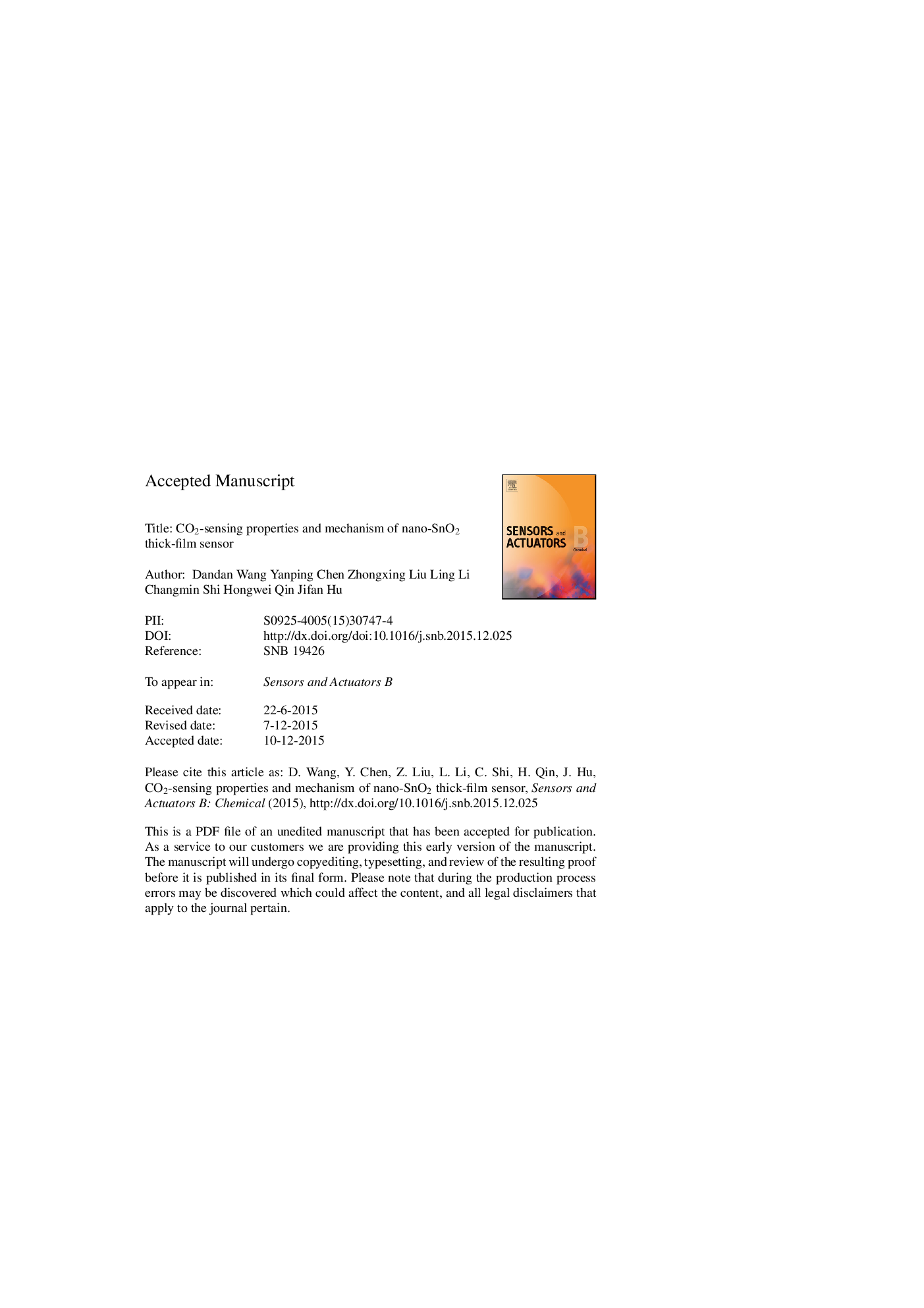| Article ID | Journal | Published Year | Pages | File Type |
|---|---|---|---|---|
| 7144321 | Sensors and Actuators B: Chemical | 2016 | 56 Pages |
Abstract
The sensing response S of SnO2 thick-film sensor based on nano-powders annealed at 600 °C to 2000 ppm CO2 at the operating temperature 240 °C can reach 1.24 for the background of wet air with 14% of room-temperature (23 °C) relative humidity (RH), which is much larger than the corresponding value (1.048) in dry air. With an increase of humidity from 14% to 66% RH, the sensing response of SnO2 to low CO2 concentrations such as 2000-4000 ppm initially increases, peaks at about 34% RH, and then decreases. CO2-sensing response monotonically decreases with an increase of humidity at high CO2 concentrations such as 6000 and 20,000 ppm. Density functional theory calculations show that CO2 molecule cannot be adsorbed onto stoichiometric SnO2 (1 1 0) surface or SnO2 (1 1 0) surface pre-adsorbed by O2â and Oâ in dry air. When CO2 is introduced to SnO2 surface in wet air, CO2 reacts with O of pre-adsorbed OHâ, bringing about the formation of carbonates containing (CO3)2â and the dissociation/movement of surface OHâ group, accompanying the releasing of electron from CO2 to SnO2 surface. The appropriate pre-adsorption of OHâ on SnO2 (1 1 0) surface promotes the sensing response of CO2.
Keywords
Related Topics
Physical Sciences and Engineering
Chemistry
Analytical Chemistry
Authors
Dandan Wang, Yanping Chen, Zhongxing Liu, Ling Li, Changmin Shi, Hongwei Qin, Jifan Hu,
